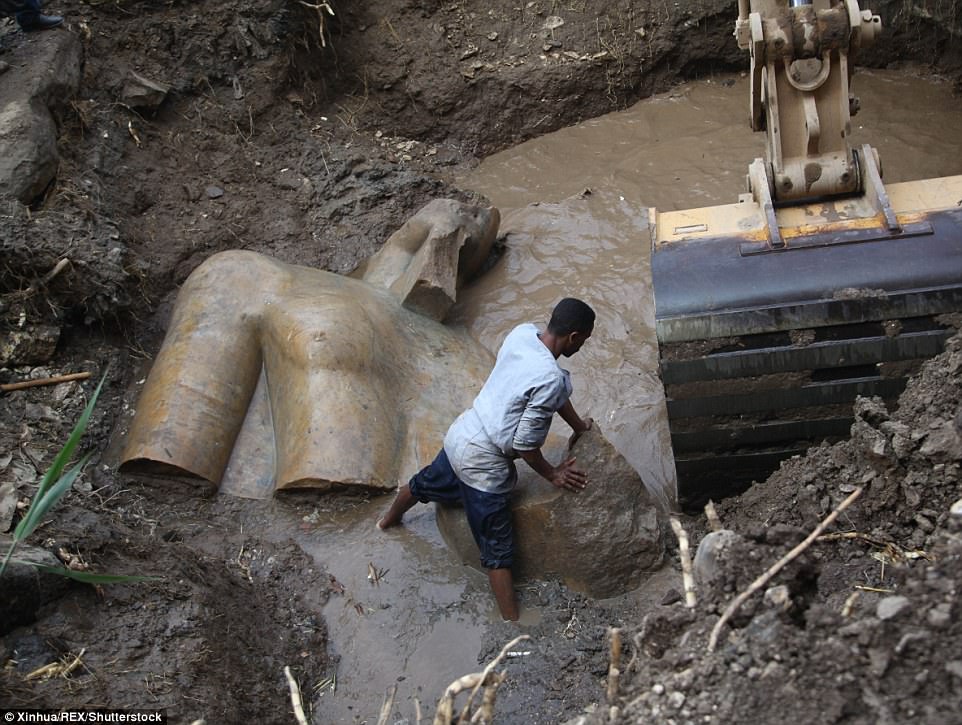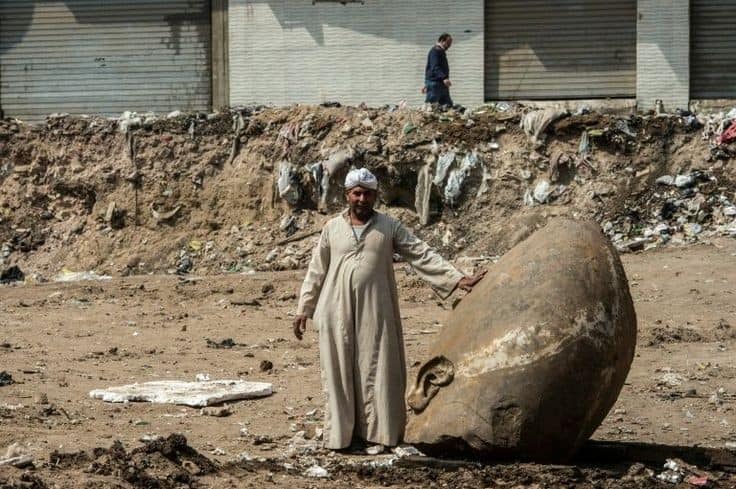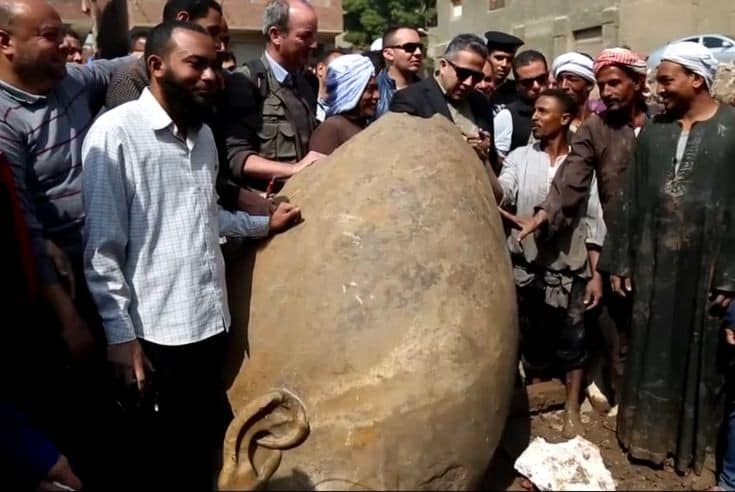Incredible scenes from the discovery of a statue of Pharaoh Ramesses II in Heliopolis (2017).
Archaeologists from Egypt and Germany have found a massive 26ft (8 metre) statue submerged in ground water in a Cairo slum.
Researchers say it probably depicts revered Pharaoh Ramses II, who ruled Egypt more than 3,000 years ago.
The discovery, hailed by the Antiquities Ministry as one of the most important ever, was made near the ruins of Ramses II’s temple in the ancient city of Heliopolis, located in the eastern part of modern-day Cairo.
Archaeologists in a Cairo suburb – once the site of the ancient capital of Heliopolis – found two 3000-year-old pharaonic statues.
The statues are thought to represent Pharaohs from the 19th dynasty.
One statue stands 26ft (8 metres) tall and is carved out of quartzite – a tough stone composed mainly of quartz.
It could not be identified from its engravings but it was found at the entrance to the temple of King Ramses II – also known as Ramses the Great – suggesting it represents him.
The other relic is a limestone statue of 12th century BC ruler King Seti II.
The discovery of the two statues shows the importance of the city of Heliopolis, which was dedicated to the worship of Ra.’Last Tuesday they called me to announce the big discovery of a colossus of a king, most probably Ramses II, made out of quartzite,’ Antiquities Minister Khaled al-Anani told Reuters on Thursday at the site of the statue’s unveiling.
Ramses the Great was the most powerful and celebrated ruler of ancient Egypt.
Known by his successors as the ‘Great Ancestor’, he led several military expeditions and expanded the Egyptian Empire to stretch from Syria in the east to Nubia in the south.
He was the third pharaoh of the Nineteenth Dynasty of Egypt and ruled from 1279 to 1213 BCE.
‘We found the bust of the statue and the lower part of the head and now we removed the head and we found the crown and the right ear and a fragment of the right eye,’ Anani said.
Yesterday, archaeologists, officials, local residents, and members of the news media looked on as a massive forklift pulled the statue’s head out of the water
The joint Egyptian-German expedition, which included the University of Leipzig, also found the upper part of a life-sized limestone statue of Pharaoh Seti II, Ramses II’s grandson, which is 80 centimetres long.
Hits: 0






